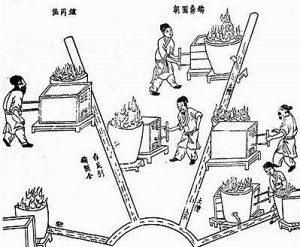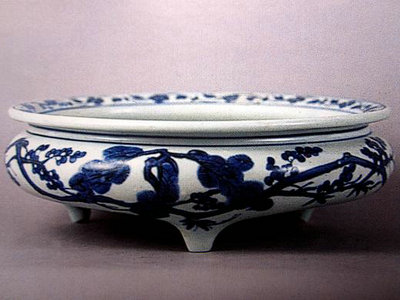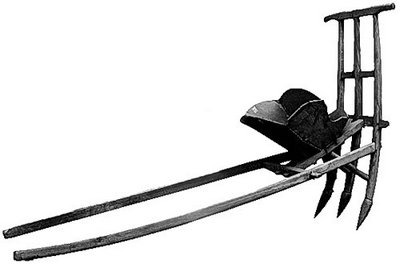CLICK HERE TO KNOW ABOUT SKILLS IN READING COMPREHENSION
Apple banana blue walk tree happy sing. Surely you were able to read each of the words in that sentence and understand what they meant independently. An apple is a fruit that is usually round and red, green or yellow. A banana is another fruit that is yellow. Blue is a color…and so on and so forth. However, when you look at the sentence as a whole, does it make sense? Probably not. This nonsense sentence demonstrates the difference between being able to read words and comprehend text. As practiced readers we may take this distinction for granted since the acts of reading and comprehension occur almost simultaneously for us. For developing readers this relationship is not as apparent, but is essential for them to become strong, capable readers.
What exactly IS reading comprehension?
Simply put, reading comprehension is the act of understanding what you are reading. While the definition can be simply stated the act is not simple to teach, learn or practice. Reading comprehension is an intentional, active, interactive process that occurs before, during and after a person reads a particular piece of writing.
Reading comprehension is one of the pillars of the act of reading. When a person reads a text he engages in a complex array of cognitive processes. He is simultaneously using his awareness and understanding of phonemes (individual sound “pieces” in language), phonics (connection between letters and sounds and the relationship between sounds, letters and words) and ability to comprehend or construct meaning from the text. This last component of the act of reading is reading comprehension. It cannot occur independent of the other two elements of the process. At the same time, it is the most difficult and most important of the three.
There are two elements that make up the process of reading comprehension: vocabulary knowledge and text comprehension. In order to understand a text the reader must be able to comprehend the vocabulary used in the piece of writing. If the individual words don’t make the sense then the overall story will not either. Children can draw on their prior knowledge of vocabulary, but they also need to continually be taught new words. The best vocabulary instruction occurs at the point of need. Parents and teachers should pre-teach new words that a child will encounter in a text or aid her in understanding unfamiliar words as she comes upon them in the writing. In addition to being able to understand each distinct word in a text, the child also has to be able to put them together to develop an overall conception of what it is trying to say. This is text comprehension. Text comprehension is much more complex and varied that vocabulary knowledge. Readers use many different text comprehension strategies to develop reading comprehension. These include monitoring for understanding, answering and generating questions, summarizing and being aware of and using a text’s structure to aid comprehension.
How does reading comprehension develop?
As you can see, reading comprehension is incredibly complex and multifaceted. Because of this, readers do not develop the ability to comprehend texts quickly, easily or independently. Reading comprehension strategies must be taught over an extended period of time by parents and teachers who have knowledge and experience using them. It might seem that once a child learns to read in the elementary grades he is able to tackle any future text that comes his way. This is not true. Reading comprehension strategies must be refined, practiced and reinforced continually throughout life. Even in the middle grades and high school, parents and teachers need to continue to help their children develop reading comprehension strategies. As their reading materials become more diverse and challenging, children need to learn new tools for comprehending these texts. Content area materials such as textbooks and newspaper, magazine and journal articles pose different reading comprehension challenges for young people and thus require different comprehension strategies. The development of reading comprehension is a lifelong process that changes based on the depth and breadth of texts the person is reading.
Why is reading comprehension so important?
Without comprehension, reading is nothing more than tracking symbols on a page with your eyes and sounding them out. Imagine being handed a story written in Egyptian hieroglyphics with no understanding of their meaning. You may appreciate the words aesthetically and even be able to draw some small bits of meaning from the page, but you are not truly reading the story. The words on the page have no meaning. They are simply symbols. People read for many reasons but understanding is always a part of their purpose. Reading comprehension is important because without it reading doesn’t provide the reader with any information.
Beyond this, reading comprehension is essential to life. Much has been written about the importance of functional literacy. In order to survive and thrive in today’s world individuals must be able to comprehend basic texts such as bills, housing agreements (leases, purchase contracts), directions on packaging and transportation documents (bus and train schedules, maps, travel directions). Reading comprehension is a critical component of functional literacy. Think of the potentially dire effects of not being able to comprehend dosage directions on a bottle of medicine or warnings on a container of dangerous chemicals. With the ability to comprehend what they read, people are able not only to live safely and productively, but also to continue to develop socially, emotionally and intellectually
Apple banana blue walk tree happy sing. Surely you were able to read each of the words in that sentence and understand what they meant independently. An apple is a fruit that is usually round and red, green or yellow. A banana is another fruit that is yellow. Blue is a color…and so on and so forth. However, when you look at the sentence as a whole, does it make sense? Probably not. This nonsense sentence demonstrates the difference between being able to read words and comprehend text. As practiced readers we may take this distinction for granted since the acts of reading and comprehension occur almost simultaneously for us. For developing readers this relationship is not as apparent, but is essential for them to become strong, capable readers.
What exactly IS reading comprehension?
Simply put, reading comprehension is the act of understanding what you are reading. While the definition can be simply stated the act is not simple to teach, learn or practice. Reading comprehension is an intentional, active, interactive process that occurs before, during and after a person reads a particular piece of writing.
Reading comprehension is one of the pillars of the act of reading. When a person reads a text he engages in a complex array of cognitive processes. He is simultaneously using his awareness and understanding of phonemes (individual sound “pieces” in language), phonics (connection between letters and sounds and the relationship between sounds, letters and words) and ability to comprehend or construct meaning from the text. This last component of the act of reading is reading comprehension. It cannot occur independent of the other two elements of the process. At the same time, it is the most difficult and most important of the three.
There are two elements that make up the process of reading comprehension: vocabulary knowledge and text comprehension. In order to understand a text the reader must be able to comprehend the vocabulary used in the piece of writing. If the individual words don’t make the sense then the overall story will not either. Children can draw on their prior knowledge of vocabulary, but they also need to continually be taught new words. The best vocabulary instruction occurs at the point of need. Parents and teachers should pre-teach new words that a child will encounter in a text or aid her in understanding unfamiliar words as she comes upon them in the writing. In addition to being able to understand each distinct word in a text, the child also has to be able to put them together to develop an overall conception of what it is trying to say. This is text comprehension. Text comprehension is much more complex and varied that vocabulary knowledge. Readers use many different text comprehension strategies to develop reading comprehension. These include monitoring for understanding, answering and generating questions, summarizing and being aware of and using a text’s structure to aid comprehension.
How does reading comprehension develop?
As you can see, reading comprehension is incredibly complex and multifaceted. Because of this, readers do not develop the ability to comprehend texts quickly, easily or independently. Reading comprehension strategies must be taught over an extended period of time by parents and teachers who have knowledge and experience using them. It might seem that once a child learns to read in the elementary grades he is able to tackle any future text that comes his way. This is not true. Reading comprehension strategies must be refined, practiced and reinforced continually throughout life. Even in the middle grades and high school, parents and teachers need to continue to help their children develop reading comprehension strategies. As their reading materials become more diverse and challenging, children need to learn new tools for comprehending these texts. Content area materials such as textbooks and newspaper, magazine and journal articles pose different reading comprehension challenges for young people and thus require different comprehension strategies. The development of reading comprehension is a lifelong process that changes based on the depth and breadth of texts the person is reading.
Why is reading comprehension so important?
Without comprehension, reading is nothing more than tracking symbols on a page with your eyes and sounding them out. Imagine being handed a story written in Egyptian hieroglyphics with no understanding of their meaning. You may appreciate the words aesthetically and even be able to draw some small bits of meaning from the page, but you are not truly reading the story. The words on the page have no meaning. They are simply symbols. People read for many reasons but understanding is always a part of their purpose. Reading comprehension is important because without it reading doesn’t provide the reader with any information.
Beyond this, reading comprehension is essential to life. Much has been written about the importance of functional literacy. In order to survive and thrive in today’s world individuals must be able to comprehend basic texts such as bills, housing agreements (leases, purchase contracts), directions on packaging and transportation documents (bus and train schedules, maps, travel directions). Reading comprehension is a critical component of functional literacy. Think of the potentially dire effects of not being able to comprehend dosage directions on a bottle of medicine or warnings on a container of dangerous chemicals. With the ability to comprehend what they read, people are able not only to live safely and productively, but also to continue to develop socially, emotionally and intellectually


























